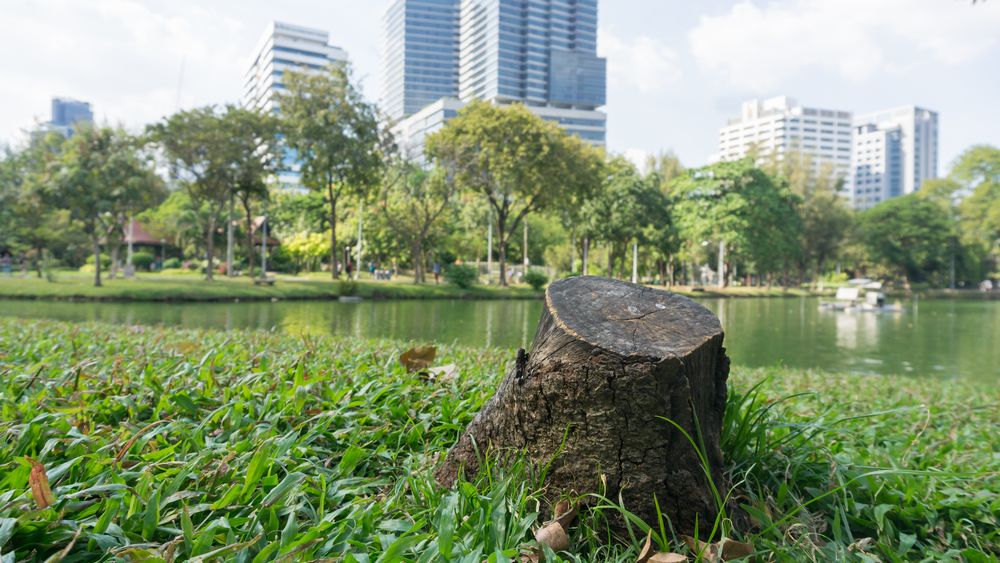What approach for a better problematic urban tree management?
A Plante & Cité new guide provides realistic solutions to diversify the ways to manage problematic urban trees.

Removal, stumping, devitalization - the tragic destiny of most “problematic” urban trees. Maybe we can do something else to conserve these symbols of Green Cities? A team of landscaping professionals has been working on this problem. Their report is included in the new Plante & Cité guide which proposes realistic solutions to diversify the ways to manage problematic urban trees. “Must” reading for all public authorities!

What is the difference between a healthy and a problematic tree?
A tree is called “problematic” when it represents a risk for its environment or passers-by. There are a thousand and one reasons which can transform a tree into a potential threat and even into a true public menace. For example:
- Damage from fungi;
- Extreme climatic conditions (frost or drought);
- Root brittleness;
- A high allergenic potential;
- etc.
Trees that threaten underground or overhead grids or impede urban developments are also problematic.
In most cases, when a tree is attacked, weakened or decays, the commonest maintenance solution is to cut it down. What a waste! Conserving these trees can have many advantages (it is even possible to measure this plant value). The new Plante & Cité guide details the challenges of conservation and lists realistic concrete solutions in the form of practical datasheets.
The questions to ask for a better problematic urban trees management
In the Plante & Cité guide appendices, one document will particularly grab the attention of public authorities wondering what approach to adopt when confronted with a problematic tree? The key steps in this approach should be taken before each tree maintenance intervention to find the right solution adapted to the context and the environmental challenges.
Site redevelopment
Redeveloping the space around the problematic tree is a practice already used by about half of all professionals when the conditions are met (traffic pressure, tree species, follow-up possibilities, etc.). This solution preserves the inter-tree network, biological balance, greening frame and makes it possible to keep the tree’s carbon storage capacity.
Among the tools available, one is to set up a safety zone with appropriate signs, rerouting mobiles and preparing an inventory of existing trees. You can thus chart the trees affected and program operations at the most suitable periods.
Tree conservation
You may want to preserve an aging or damaged tree, especially when it is remarkable. Although weakened, these trees are still a major habitat for biodiversity. Saving them means you don’t have to wait years for new trees to grow!
For the maintenance of weak trees, cabling and bracing may be a solution. If the tree is vigorous, try pruning to allow new shoots to grow – or just cut away the weak parts. If you cannot keep the tree in the same place, consider transplantation. If a dead tree is not a threat to security, transform the trunk into a “candle”, to attract insects and birds.
Waste wood is easy to revalorize as composts, kindling, mulch, etc. and can also be carved into benches and tables to embellish public parks and gardens!
Stump conservation
If it is impossible to conserve the tree, try to avoid tearing up the stump because the roots of a dead tree continue to play an active role, besides contributing to the return of organic matter to the ground. Roots shelter underground biological life and limit the soil erosion and crumbling.
If it is not a nuisance, public authorities can choose to include the stump in a development or to transform it into street furniture (chairs, benches). Some cities, like Brest (France) or Differdange (Luxembourg) have metamorphosed their stumps into sublime woodcarvings.
Total removal
When it is impossible to conserve the tree or its stump, you can always replant it somewhere else. If the tree is too sick to save, you can consider turfing, redesigning the roadway system or working the ground so rainwater can soak in. Ideally, design a new project to replace the tree you have removed and the benefits it brought when alive. Why not replant a healthy tree in its place?
Where is the world at with reforestation projects?
Differentiating problematic urban trees management, from pruning for safety reasons to the revalorization of stumps, means getting the full benefits they provide throughout their life cycle. The Plante & Cité guide gives you all the cards you need to deploy a durable tree maintenance strategy.
Do you want to learn more about safeguarding urban biodiversity? Come to the Paysalia 2021 Biodiversity Village from November 30th to December 2nd and get customized advice. Public authorities are very welcome!
© Photo credit: Kittiwat / Adobe Stock

